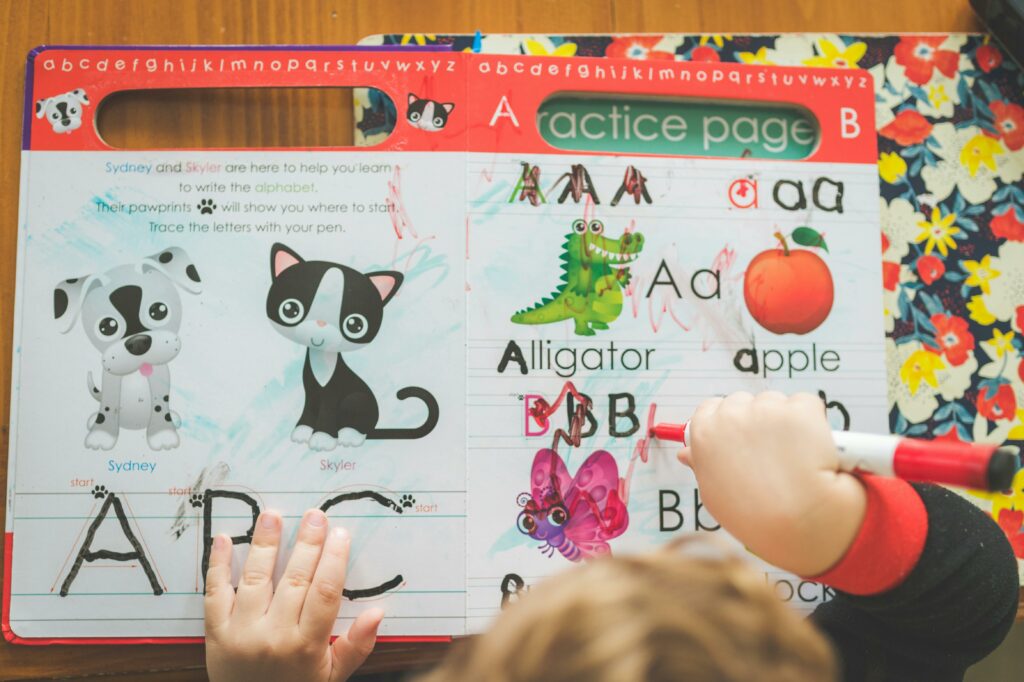
Every parent has experienced moments when their child exhibits challenging behaviors, whether it’s tantrums, avoidance, or difficulty following instructions. The key to understanding and addressing these behaviors lies in Applied Behavior Analysis (ABA) therapy, which uses structured techniques to teach new skills and reduce unwanted behaviors.
One of the most fundamental concepts in ABA therapy is the ABC model of behavior—Antecedent, Behavior, and Consequence. This framework helps parents and therapists analyze why behaviors occur and develop effective strategies for change. In this blog, we’ll break down the ABCs of behavior and explore how parents can use this approach to support their child’s development. Whether you’re in Atlanta, Georgia, or elsewhere, understanding this model can be a game-changer in managing behaviors effectively.
The ABC model is a structured way to analyze and modify behavior. Here’s what each component represents:
Antecedent (A) – What happens before the behavior? This could be an event, instruction, or environmental factor that triggers a behavior.
Behavior (B) – The action or response of the child (e.g., crying, following a direction, refusing a task).
Consequence (C) – What happens after the behavior? This can either reinforce or discourage the behavior from occurring again.
By understanding this sequence, ABA therapists can determine the function of a behavior and implement strategies to encourage positive changes.
Understanding the ABC model becomes easier when we look at real-world scenarios:
Antecedent: A parent tells the child that it’s time to turn off the tablet.
Behavior: The child starts crying and yelling.
Consequence: The parent gives the child five more minutes to avoid a meltdown.
In this scenario, the consequence (extra screen time) reinforces the behavior (tantrum). A better approach might be to use a visual timer or a transition warning to prepare the child for the change.
Antecedent: The child wants a snack but doesn’t have access to it.
Behavior: The child says, “Can I have a snack, please?”
Consequence: The parent provides the snack with praise for asking politely.
Here, the positive reinforcement (receiving the snack) increases the likelihood that the child will use polite language in the future.
Parents can apply the ABC framework in their daily interactions to encourage positive behavior and reduce unwanted actions. Here’s how:
Observe and Identify Patterns
Keep a journal of behaviors, noting the antecedents and consequences.
Look for trends—does a tantrum happen every time screen time ends? Does whining increase when bedtime approaches?
Modify the Antecedent
Adjusting the environment can prevent unwanted behaviors. For example:
Provide clear instructions before transitions.
Offer choices to give children a sense of control.
Use visual schedules to help with predictability.
Change the Consequence
Reinforce desired behaviors with praise or rewards.
Avoid unintentionally reinforcing negative behaviors (e.g., giving in to tantrums).
Use natural consequences (e.g., if a child refuses to wear a jacket, they may feel cold outside, teaching them to make better choices next time).
One of the most effective strategies in ABA therapy is positive reinforcement, which strengthens desirable behaviors. Instead of focusing on what a child is doing wrong, parents and therapists can:
Acknowledge and praise positive behaviors as soon as they occur.
Use reward systems, such as sticker charts or small incentives, to reinforce effort.
Encourage self-regulation by teaching coping skills and calming techniques.
The ABC model provides a powerful tool for understanding and guiding behavior in children. By identifying antecedents, analyzing behaviors, and shaping consequences, parents can create a structured, supportive environment that fosters positive development.
For families in Atlanta, Georgia, seeking ABA therapy, working with experienced professionals can provide tailored strategies to implement the ABC model effectively. With consistency and patience, parents can help their children navigate daily life with confidence and success.